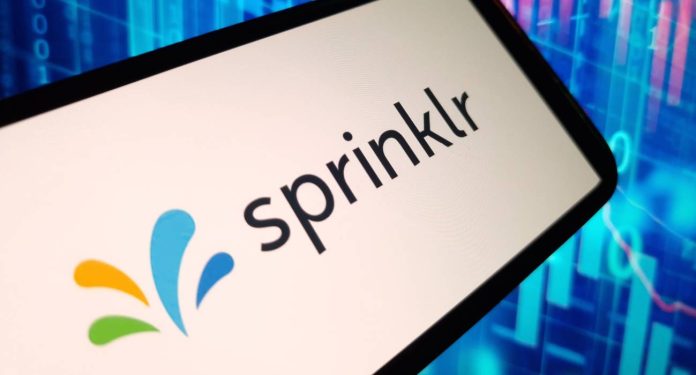Sprinklr research shows brands overestimate CX trust—consumers report inconsistent experiences, highlighting opportunities for AI-driven improvements.
Sprinklr, the unified customer experience management (Unified-CXM) platform for modern enterprises, announced the release of a new research report prepared by Metric Sherpa: The CX Confidence Disconnect: Why Customers Struggle to Believe What Brands Promise. The findings, drawn from dual surveys of more than 2,600 business leaders and consumers, reveal a potential disconnect between how business leaders perceive their customer experience (CX) and how consumers live it. The gap can threaten trust, performance, and readiness for AI.
The Brand and Customer Divide
Across every customer touchpoint, from marketing, to service, to post-purchase care, business leaders report high confidence in their ability to deliver a consistent, trustworthy experience. But consumers report something very different.
- 91% of business leaders believe customers understand and experience their brand as intended.
- Yet only 36% of consumers say their experiences with brands are consistent across channels: website, app, support, and store.
- Additionally, 79% of customers say they often feel unrecognized or forgotten by brands they’ve interacted with multiple times.
This gap reveals a blind spot embedded deep within daily operations. Leaders believe CX organizations are executing effectively. The data suggests that customers experience fragmentation, repetition, and erosion of trust.
“This report makes it clear that many enterprises are leading with confidence built on false assumptions,” said Justin Robbins, Founder & Principal Analyst at Metric Sherpa. “Executives may believe their brands are trusted and consistent, yet customers describe fragmented and forgettable experiences. Closing this gap demands decisive action: measure trust with the same rigor as revenue, unify data and teams so promises match delivery, and redesign recovery around speed and accountability. Brands that take these steps will earn durable trust in an era where skepticism is high and switching is easy.”
The Broken Promises Behind the Brand Narrative
Among the business leaders surveyed, nearly half of whom hold executive roles, confidence in brand trustworthiness runs high:
- 86% say customers mostly or completely trust them to follow through on promises.
- But among consumers, nearly half say brands overpromise and underdeliver sometimes, often, or always.
A divergence exists between the confidence brands project, and the skepticism consumers carry. Brands must also contend with a broad structural breakdown in how trust is earned and maintained that we see reflected across culture today. In this environment, misleading advertising, over-hyped AI, and failed service recovery are even more costly and among the most often cited reasons customers lose faith.
The result: nearly 6 in 10 consumers say they’ve stopped doing business with a brand because of a single poor experience.
Also Read: Marketers, Are You Ready for the Search-First Consumer?
Is AI the Next Inflection Point for Trust?
AI has the power to transform CX, helping companies deliver tailored experiences and drive faster resolutions for customers at scale. As businesses look to deploy AI across customer-facing functions, the research reveals an important early warning:
- While leaders believe customers are comfortable using AI for basic support tasks, only 17% of consumers are “very comfortable” doing so.
- 43% don’t trust AI to make decisions that affect their finances or personal data.
- And 72% of consumers say they expect to be told every time they’re interacting with AI.
These numbers are meaningful enough to raise attention. They point to a tenuous foundation for AI acceptance—where transparency, human intervention, and context continuity are still preferred, and expected.
Recovery is the Moment of Truth That Most Brands Miss
What customers value most after a brand failure isn’t a discount or an apology. It’s action.
- The #1 loyalty driver for consumers post-failure is fast, honest resolution.
- Yet only 36% of business leaders say their organizations follow up to confirm resolution.
This is where reputations are salvaged, strengthened or lost. When resolution is mishandled or absent, customers don’t simply complain. They walk away, and they bring others with them. Negative experiences are shared socially, passed along privately, reviewed publicly, and remembered long after a campaign ends.
Also Read: Using Behavioral Data to Drive Authentic Customer Relationships in a Digital World
The Strategic Risk and Opportunity Ahead
This research offers a rare side-by-side view of expectation versus execution. The message highlights a common reality: many organizations have grown confident in their messaging, but struggle with their delivery. The discrepancy between perception and performance is measurable, material, and mounting. However, Sprinklr believes that this discrepancy also creates amazing opportunities for brands willing to lead customer experience in the age of AI.
“Extraordinary customer experiences don’t happen by accident—they’re built through intentional, omni-channel listening and action,” said Sprinklr CMO, Arun Pattabhiraman. “Sprinklr helps brands unify the channels, signals, and teams surrounding the customer. Our AI-native platform isn’t just built to automate—it’s built to understand and offer insight. When brands move from fragmented efforts to connected intelligence, they aren’t just able to improve experiences—they gain the power to make them extraordinary.”
Download the full report – The CX Confidence Disconnect: Why Customers Struggle to Believe What Brands Promise.










